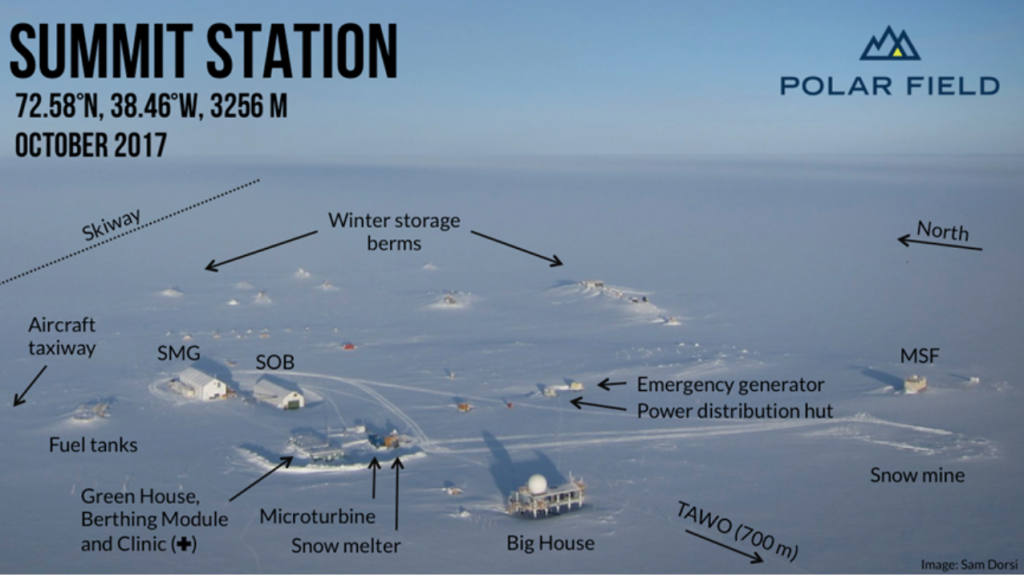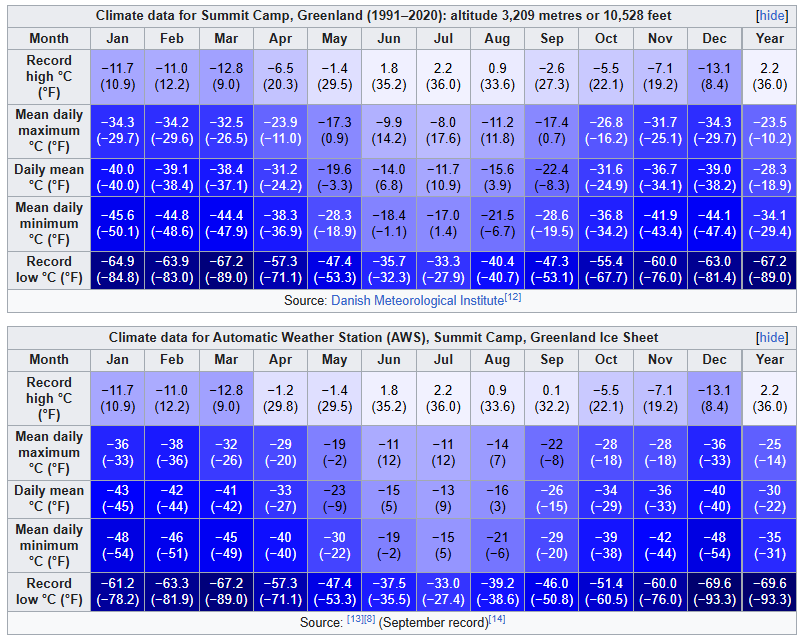
On 13 July 2025, the Summit Station in Greenland experienced an unusually warm temperature of -0.6°C, a striking event given its location near the highest point of the Greenland Ice Sheet. This reading stands out as it is only 2.8°C below the station’s all-time highest recorded temperature, marking one of the warmest days ever observed at this remote and extreme environment.
Summit Station sits at an elevation of over 3,200 meters, deep within the Greenland Ice Sheet, where temperatures generally remain well below freezing—even in the height of summer. The typical summer temperatures here hover far below zero, often between -10°C and -20°C. For temperatures to approach the freezing point (-0°C) at such altitude is exceptionally rare, emphasizing the significance of this recent observation.
This extraordinary warmth is a clear example of the ongoing process known as Arctic amplification—a phenomenon where the Arctic warms at a rate significantly faster than the global average. Due to feedback mechanisms like melting ice reducing surface reflectivity (albedo), changes in atmospheric circulation, and increased water vapor, polar regions experience amplified warming compared to lower latitudes.
The proximity of the -0.6°C reading to the all-time high underscores the accelerating impact of climate change on Greenland’s ice sheet. The Greenland Ice Sheet is a crucial component of the global climate system, storing vast amounts of freshwater and significantly influencing sea level worldwide. Higher temperatures at Summit can lead to increased surface melting, even at the ice sheet’s summit, which historically has remained cold enough to avoid major melt events.
Recent decades have shown a disturbing trend: Greenland’s ice sheet is losing mass at an increasing rate due to both surface melt and glacier calving. Events like the near-record warmth on 13 July 2025 contribute directly to this process, as elevated temperatures cause surface ice to melt and rivers to flow atop the ice sheet, accelerating ice movement toward the sea.
The surface melting triggered by such warm spells also has a feedback effect. Meltwater can seep through the ice, lubricating the base and causing glaciers to slide more rapidly. This intensifies ice loss beyond what atmospheric temperatures alone might suggest.
Moreover, this temperature event fits into a larger pattern of extreme heatwaves and unusual warmth sweeping the Arctic during the summer of 2025. Across Greenland and the broader Arctic Circle, temperatures have repeatedly pushed records, challenging the resilience of polar ecosystems and ice masses. The consequences include not only rising sea levels but also disruptions to local wildlife, indigenous communities, and global weather patterns.
Summit Station, due to its remote and elevated position, serves as an important monitoring site for scientists studying the Greenland Ice Sheet and Arctic climate. Observations here provide critical insights into how warming is progressing in one of the planet’s most sensitive environments.
In conclusion, the -0.6°C temperature recorded at Summit Station on 13 July 2025, only 2.8°C shy of the all-time record, is a stark indicator of accelerating climate change in the Arctic. It highlights the increasing vulnerability of Greenland’s ice and the urgent need for continued scientific monitoring and global efforts to reduce greenhouse gas emissions to mitigate further warming.

Source: https://en.wikipedia.org/wiki/Summit_Camp

Illustration picture. Credit: Sam Dorsi / https://geo-summit.org/summit-station/working-at-summit



























1 thought on “Summit, Greenland, -0,6°C, only 2.8°C below All-time High”
Comments are closed.